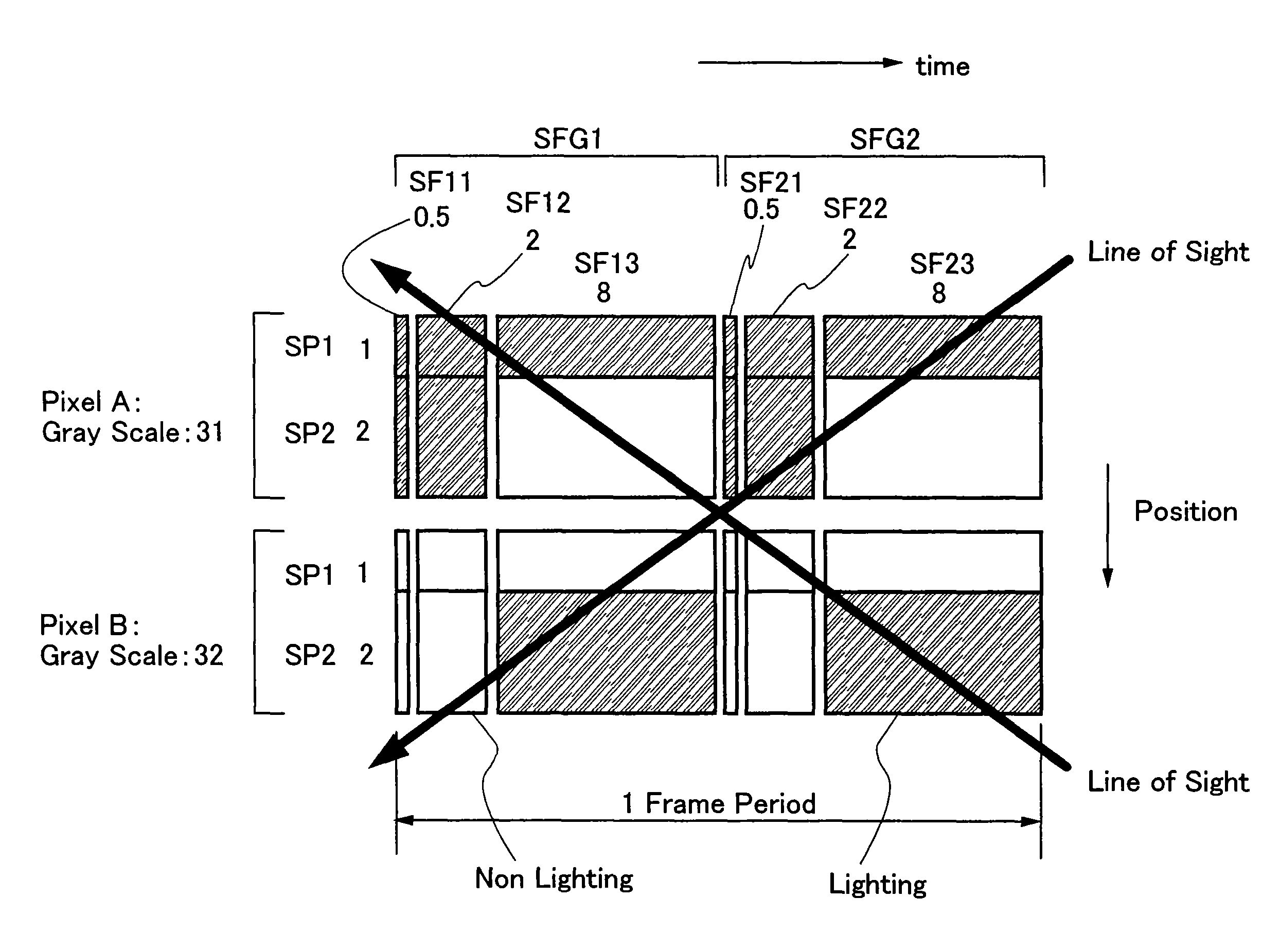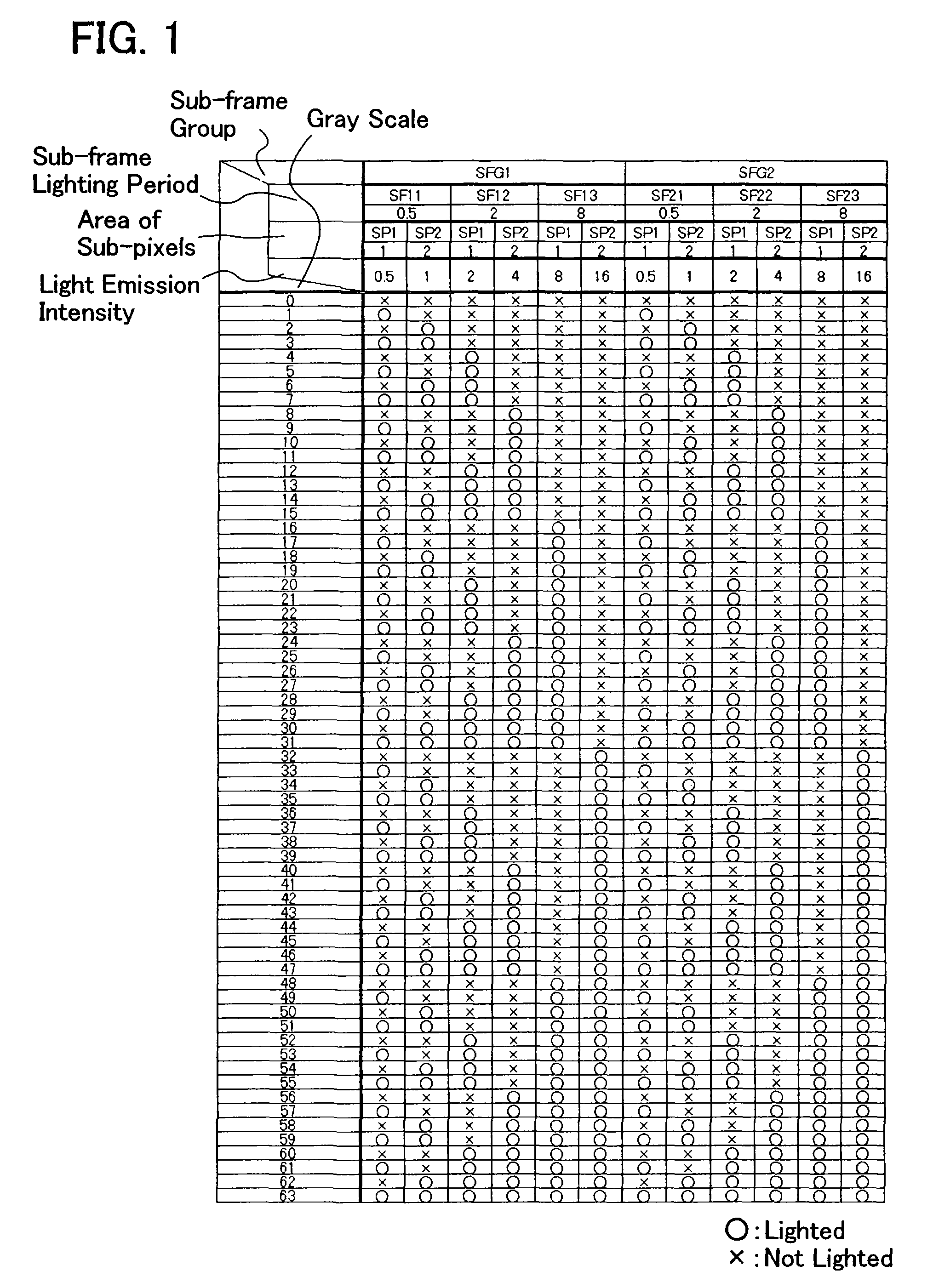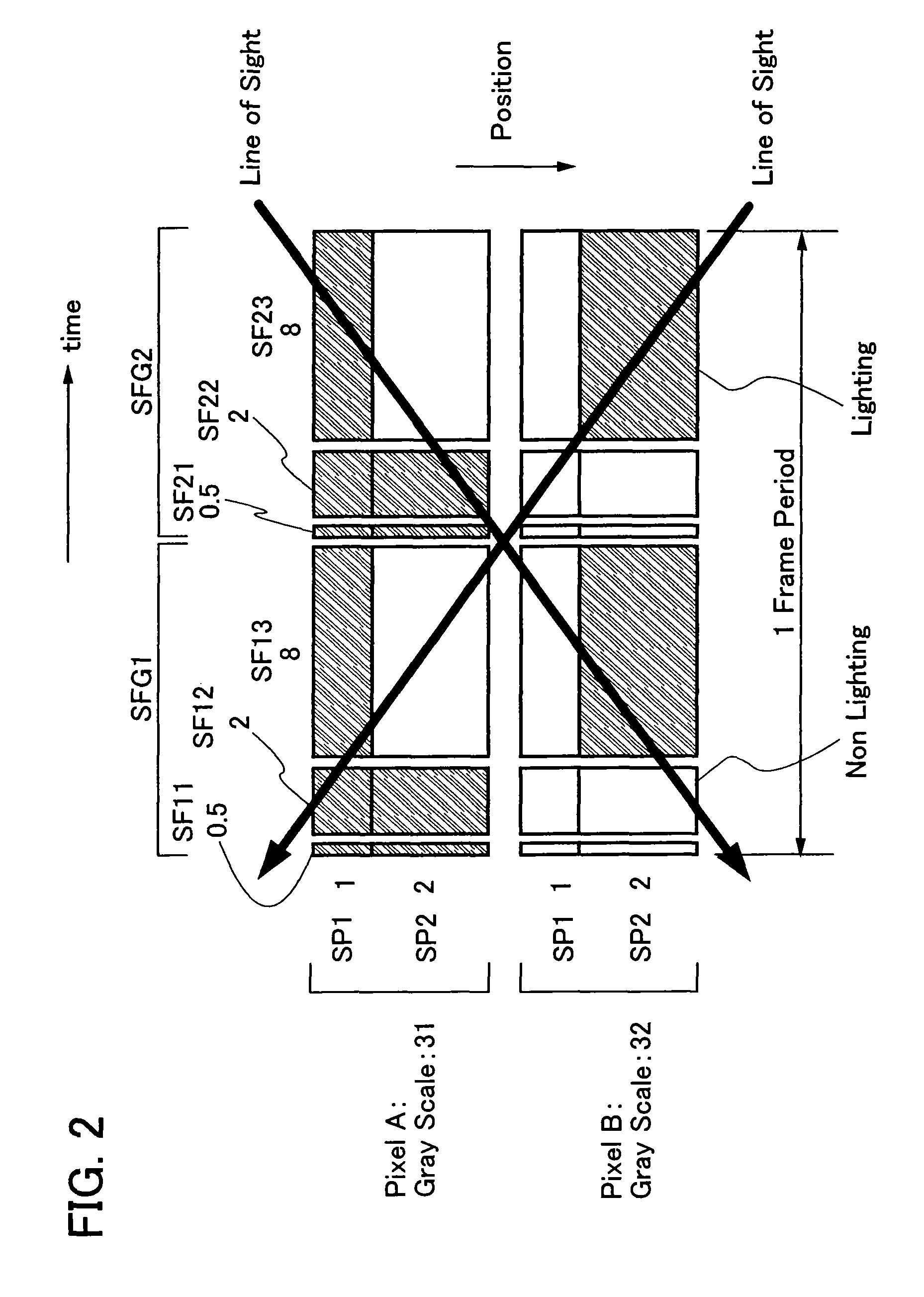Display device and driving method thereof
a technology of a display device and a driving method, which is applied in the direction of instruments, computing, electric digital data processing, etc., can solve the problems that the degradation of image quality cannot be sufficiently suppressed, and the realization of high-definition and multiple gray scales, so as to improve display quality, reduce pseudo contours, and improve duty ratio
- Summary
- Abstract
- Description
- Claims
- Application Information
AI Technical Summary
Benefits of technology
Problems solved by technology
Method used
Image
Examples
embodiment mode 1
[0109]In this embodiment mode, an example of applying a driving method of the present invention to a case of a 6-bit display (64 gray scales) is described.
[0110]The driving method of this embodiment mode is a combination of an area gray scale method by which a gray scale is expressed by dividing one pixel into a plurality of sub-pixels and controlling the number or area of lighted sub-pixels, and a time gray scale method by which a gray scale is expressed by dividing one frame into a plurality of sub-frames, each of which is weighted with respect to the number of light emissions and a light emitting period, and then the total weight is differentiated for each gray scale. In other words, one pixel is divided into m sub-pixels so that the m sub-pixels have an area ratio of 20:21:22: . . . :2m−3:2m−2:2m−1. In addition, k sub-frame groups (k is an integer of k≧2) including a plurality of sub-frames are provided in one frame, along with dividing one frame into n sub-frames so that a rati...
embodiment mode 2
[0188]Embodiment Mode 1 describes a case where a lighting period increases in linear proportion to an increase in gray scales. In this embodiment mode, a case of applying gamma correction is described.
[0189]Gamma correction refers to a method where the lighting period increases in non-linear proportion to an increased gray scale. Even when luminance increases linearly, it is difficult for human eyes to perceive that the luminance has become higher proportionally. It is even more difficult for human eyes to perceive the difference in luminance as the luminance becomes higher. Therefore, in order for human eyes to perceive the difference in luminance, a lighting period is required to be lengthened in accordance with the increased gray scales, that is, gamma correction is required to be performed. Note that when a gray scale is x and luminance is y, the relation between the luminance and the gray scale in performing the gamma correction can be expressed by the following Formula (1):
y=A...
embodiment mode 3
[0199]In this embodiment mode, an operation of a display device is described with reference to a timing chart in the case (FIG. 1) where one pixel is divided into two sub-pixels (SP1 and SP2) so that an area ratio of the sub-pixels is 1:2, along with providing two sub-frame groups (SFG1 and SFG2) in one frame, as well as dividing one frame into three sub-frames (SF1, SF2, and SF3) so that a lighting period ratio of the sub-frames is 1:4:16.
[0200]Here, the sub-pixels have the following areas: SP1=1 and SP2=2, and the sub-frames have the following lighting periods: SF1=1, SF2=4, and SF3=16.
[0201]First, FIG. 25 shows a timing chart in the case where a period where a signal is written to a pixel and a lighting period are separated. Note that a timing chart is a diagram showing a timing of light emission of a pixel in one frame. A horizontal direction indicates time, and a vertical direction indicates a row where pixels are arranged.
[0202]First, signals for one screen are inputted to all...
PUM
 Login to View More
Login to View More Abstract
Description
Claims
Application Information
 Login to View More
Login to View More - R&D
- Intellectual Property
- Life Sciences
- Materials
- Tech Scout
- Unparalleled Data Quality
- Higher Quality Content
- 60% Fewer Hallucinations
Browse by: Latest US Patents, China's latest patents, Technical Efficacy Thesaurus, Application Domain, Technology Topic, Popular Technical Reports.
© 2025 PatSnap. All rights reserved.Legal|Privacy policy|Modern Slavery Act Transparency Statement|Sitemap|About US| Contact US: help@patsnap.com



